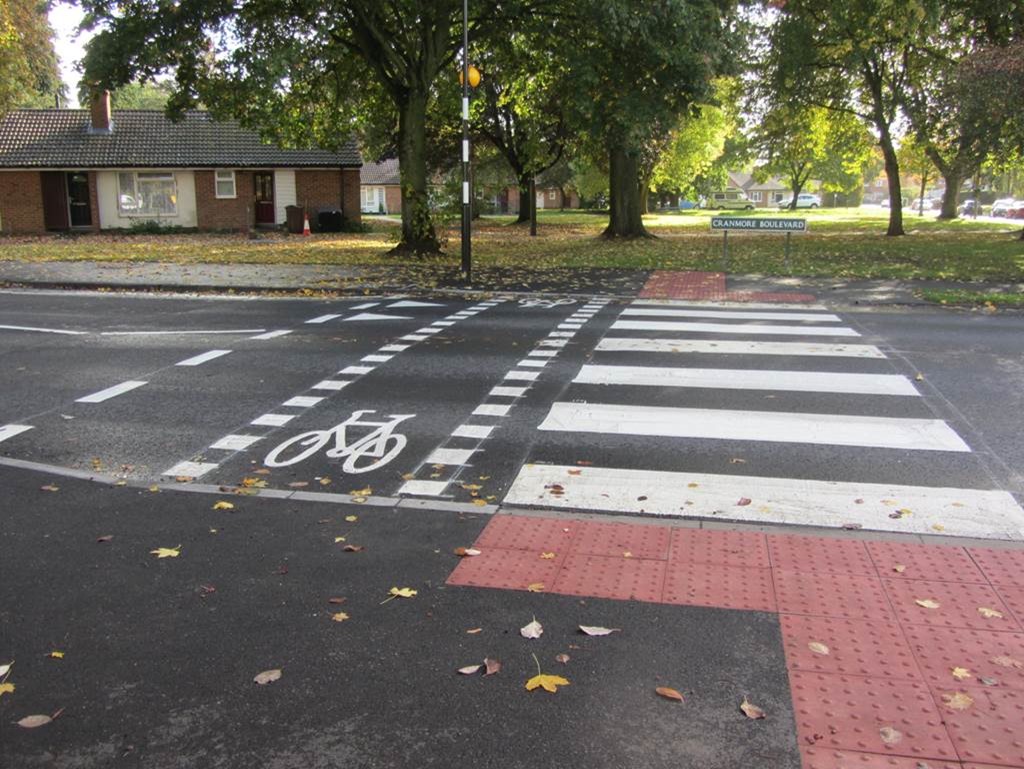Stage 3 audit on the Solihull Cycle Network
The Active Travel Fund, first announced in May 2020, has allowed numerous Highway Authorities to invest in schemes that help improve existing and create new walking and cycling facilities. Solihull Council secured approximately £1m to create three new cycle lanes and a borough-wide cycle parking scheme.
One of the main barriers to cycling is safety; the creation of three new cycle lanes throughout Solihull should help address safety issues and increase the use of cycling throughout the borough.
Destinations and ‘Beryl Bikes’
The cycle routes have been strategically located to improve accessibility to desired areas, such as the town centre, for those travelling by bike.
The A34 corridor is now linked to the town centre via Blossomfield Road and Cranmore Avenue. Knowle is connected to the town centre via Brueton park, while Meriden is linked with Millisons Wood.
For those who don’t own bikes, cycle hire is available across Solihull and the West Midlands. Taking inspiration from the ‘Boris Bikes’, which have proved popular in London, the ‘Beryl Bikes’ can be hired throughout Solihull. The location of docking stations, where the bikes can be hired and returned to, are strategically located throughout Solihull at critical points such as train stations, Solihull town centre, local parks and residential areas. E-bikes are also available, meaning longer trips to Birmingham become more accessible.

Design
The routes incorporate several similar design techniques used when introducing new cycle lanes. ‘Orcas’ and ‘Wand Orcas’ have been provided to separate the carriageway from the cycleway.
Blue treatments have been provided where the cycleway navigates a side junction; at some of these locations, a give-way line in advance of the cycleway has been giving cyclists priority over vehicles.
Some crossings have been upgraded to parallel crossings meaning cyclists are separated from pedestrians when using the crossing.
The design of the cycle routes takes its principles from LTN 1/20, the guidance for Cycle Infrastructure Design that the DfT produced in 2020.
Some routes have been upgraded from existing cycleways while others have had road space re-allocated. Blossomfield Road, for example, had an existing bus lane re-allocated for a two-way cycle route.

Road Safety Audit on the Routes
TMS was involved in the Stage 3 Road Safety Audit for some of these cycle lanes. During this Road Safety Audit, the audit team assessed the completed scheme for any safety problems which users may encounter.
Richard Cook, Director at TMS and Team Member for the Road Safety Audit, said:
“It’s excellent that TMS had the opportunity to be involved in the Stage 3 Road Safety Audit on this scheme in Solihull. Whenever we undertake a Road Safety Audit, we find safety problems which we may encounter on a project. To be able to improve the safety of cyclists on these routes is a great opportunity.
We want to make sure that our roads are safe for all users, including cyclists, so undertaking Road Safety Audits on cycle schemes is something we are seeing become more prevalent.”
TMS Road Safety Auditor and Team Leader for these audits, Harminder Aulak, also commented:
“The trial cycle schemes allowed us to assess the ‘Orca’ type cycle lane separators used to provide better protection for cyclists travelling within cycle lanes. They did make us feel safer against motorised vehicles, especially where speed limits were 40mph. There were some issues with the maintenance of the cycle facilities, such as ensuring the cycle separators were visible, and cycle lanes were swept. Otherwise, the cycle routes provided useful links to access local facilities, and hopefully, future development of the routes will encourage more people to cycle.”
What's next?
The cycle routes were completed in early 2022, so it is unknown how much of an impact these schemes have had on journeys made by cycling throughout Solihull. However, the cycle routes improve the safety of cyclists using these routes. Hopefully, less confident users will now feel comfortable making their trips on bikes rather than using a vehicle.
With this new addition of cycle infrastructure in Solihull and the improved facilities in Birmingham, which includes the Birmingham ‘Cycle Highway’ and a new footbridge/cycleway across the A38, it is hoped that people will feel more comfortable swapping a car/bus for a bike!
The West Midlands Combined Authority received more than £17 million from the Active Travel Fund. This means that cycling infrastructure throughout the West Midlands will hopefully improve in the years to come.
If you are involved in a cycle infrastructure project and need a Road Safety Audit or help regarding safety on your scheme, please get in touch with us.